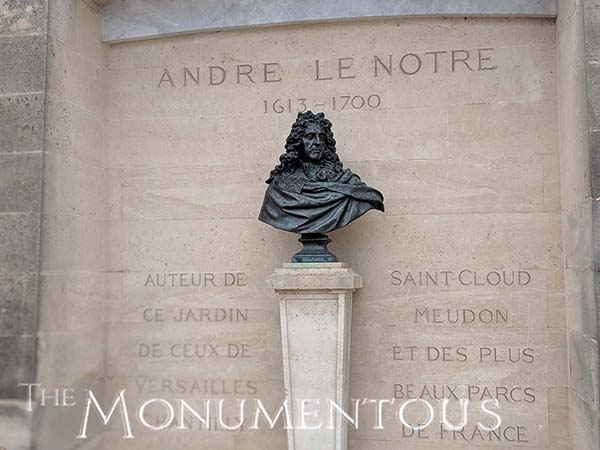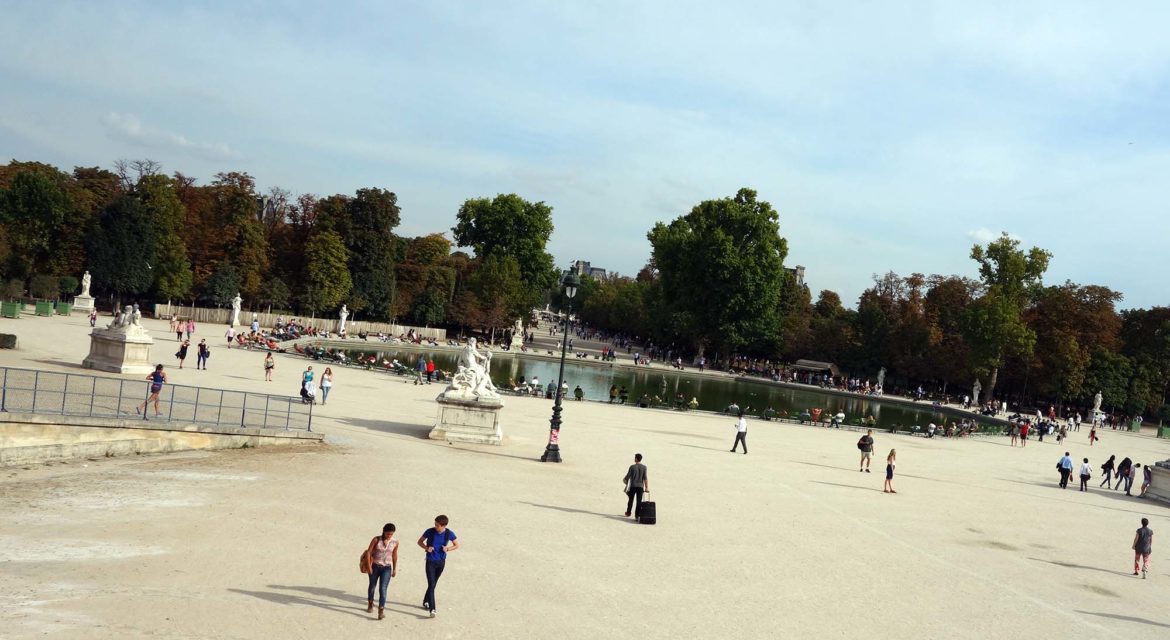 Located between the Louvre and the Place de la Concorde in Paris, Tuileries Garden (Jardin des Tuileries) has become one of Paris’s most popular green spaces. The Gardens have become known as a place where Parisians can celebrate, take a walk and relax amidst beautiful artwork. Visitors have these options as well, but they can also experience the history and monuments that are located throughout the Gardens. The spaces showcases how what might otherwise just be a park or empty green space can become so much more.
Located between the Louvre and the Place de la Concorde in Paris, Tuileries Garden (Jardin des Tuileries) has become one of Paris’s most popular green spaces. The Gardens have become known as a place where Parisians can celebrate, take a walk and relax amidst beautiful artwork. Visitors have these options as well, but they can also experience the history and monuments that are located throughout the Gardens. The spaces showcases how what might otherwise just be a park or empty green space can become so much more.

The Garden of the Tuileries Palace
 Like other gardens that were established for an entirely different purpose, Tuileries Garden was established by Catherine de’ Medici as the garden of the Tuileries Palace, which was constructed in 1564. Tuileries Palace, which was destroyed in 1883, became the residence of a large number of French sovereigns such as Henri IV, Louis XIV, and Napoléon Bonaparte.
Like other gardens that were established for an entirely different purpose, Tuileries Garden was established by Catherine de’ Medici as the garden of the Tuileries Palace, which was constructed in 1564. Tuileries Palace, which was destroyed in 1883, became the residence of a large number of French sovereigns such as Henri IV, Louis XIV, and Napoléon Bonaparte.
Tuileries Garden was opened to the public in 1667 to become one of the first parks to open to the public. In the eighteenth century, the park featured amenities such as cafes, kiosks, deck chairs and public toilets. At the end of the 19th and beginning of the 20th century, the Tuilieries garden was filled with entertainment for the public including acrobats, puppet theatres, lemonade stands, small boats on the lakes, donkey rides, and toy stands. Today, chairs are still available throughout the park, freely available to walkers who like to sit there near one of the ponds during pleasant weather.
Every year, part of Paris Fashion Week is held there, bringing together celebrities, models, and fashion lovers. It is also the location for the Parisian “Fête des Tuileries”, a funfair that runs from June to August. Events like PAD Paris – art + design and Le dîner en blanc (‘Dinner in white’) also take place throughout the year. These events are just part of what visitors can experience in the space though.

The Sculptures, Statues and Experiences of Tuileries Garden
 Fountains and sculptures have always been part of the landscape of Tuileries Garden, going back to the days of Catherine de Medici. Pieces like Mercury riding Pegasus, The Oath of Spartacus and Theseus and the Minotaur are among the most notable, but far from the biggest.
Fountains and sculptures have always been part of the landscape of Tuileries Garden, going back to the days of Catherine de Medici. Pieces like Mercury riding Pegasus, The Oath of Spartacus and Theseus and the Minotaur are among the most notable, but far from the biggest.
The Arc de Triomphe du Carrousel dominates the east end of the Gardens. Built between 1806 and 1808 to commemorate Napoleon’s military victories of the previous year, the monument is 63 feet high, 75 feet and 24 feet deep. Numerous bas-reliefs depict Napoleon’s diplomatic and military victories.
There are also 20 sculptures by Aristide Maillol on view in the Carrousel Garden, Throughout Tuileries, visitors can admire over 200 statues and vases, dating from the 17th to the 21st century. In 1719 the main entrance is livened up with two statues, each depicting the renowned Mercury mounted upon his winged horse. Maillol statues stand alongside those of Rodin or Giacometti.
The Grand Couvert is the part of the garden covered with trees, where many important works of the 20th century and contemporary sculpture are located. In 1998, under President Jacques Chirac, works of modern sculpture by Jean Dubuffet, Henri Laurens, Étienne Martin, Henry Moore, Germaine Richier, Auguste Rodin and David Smith were placed in the garden.
There are also three restaurants at Tuileries, each of which have created options for visitors and a powerful source of revenue for the park. La Terrasse de Pomona, The Café des Marronniers and Loulou Restaurant Paris are all open at distinct times and provide different eating experiences for visitors.
 During the summer holidays, a traditional funfair is set up in the Tuileries Gardens. Children and adults, tourists and Parisians all enjoy the 60 or so attractions. Those include bumper cars, ghost trains, shooting gallery, hall of mirrors and a 1900s wooden horses merry-go-round.
During the summer holidays, a traditional funfair is set up in the Tuileries Gardens. Children and adults, tourists and Parisians all enjoy the 60 or so attractions. Those include bumper cars, ghost trains, shooting gallery, hall of mirrors and a 1900s wooden horses merry-go-round.
Given its proximity to monuments like the Louvre Pyramid and the Eiffel Tower, Tuileries Garden would always serves as an important connection point in Paris for both residents and tourists. However, by creating so many different experiences for everyone, Tuileries Garden has come to showcase what it can mean for a park to be more than a green space and create a long-lasting legacy for an entire city.

More Than a Green Oasis in the Heart of Paris
 Tuileries Garden has become one of the most popular public gardens in all of Paris and is an iconic landmark of the city. It has become a public park where hundreds of Parisians and tourists can stroll down its paths, sunbathe and get away from the busy city life. In doing so, it has enabled a legacy that is about how parks can be transformed into something much more than greenspaces or connection points between landmarks.
Tuileries Garden has become one of the most popular public gardens in all of Paris and is an iconic landmark of the city. It has become a public park where hundreds of Parisians and tourists can stroll down its paths, sunbathe and get away from the busy city life. In doing so, it has enabled a legacy that is about how parks can be transformed into something much more than greenspaces or connection points between landmarks.

